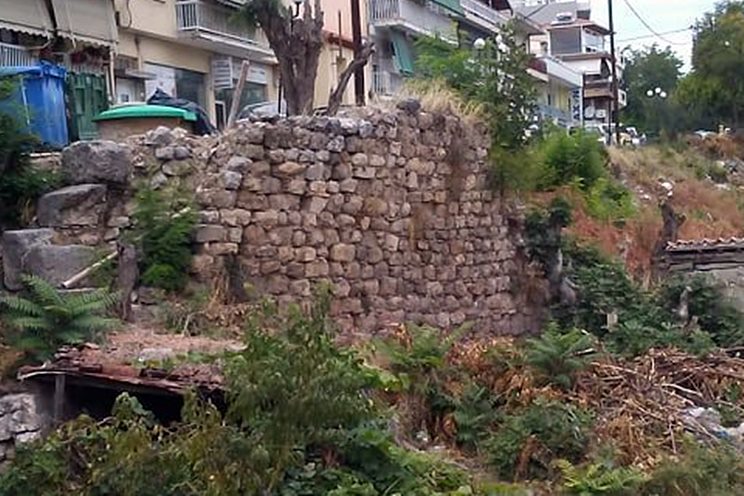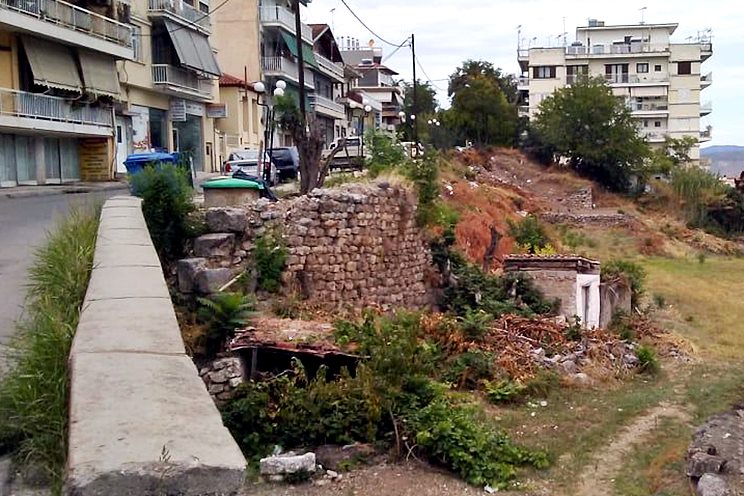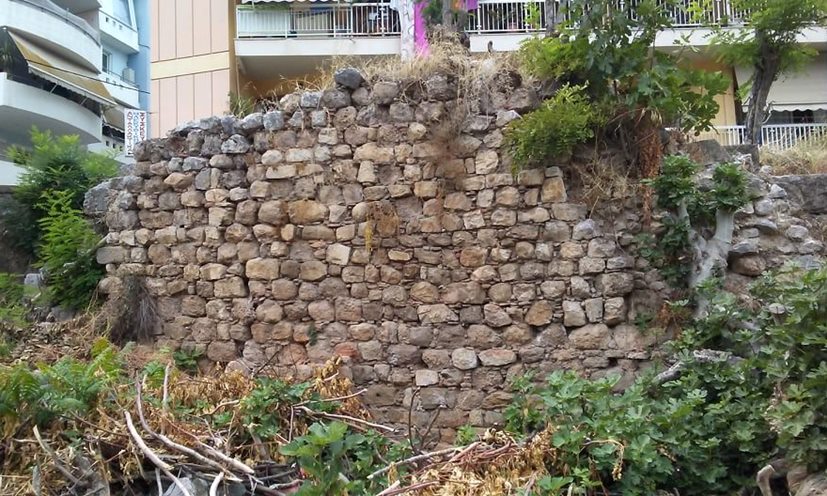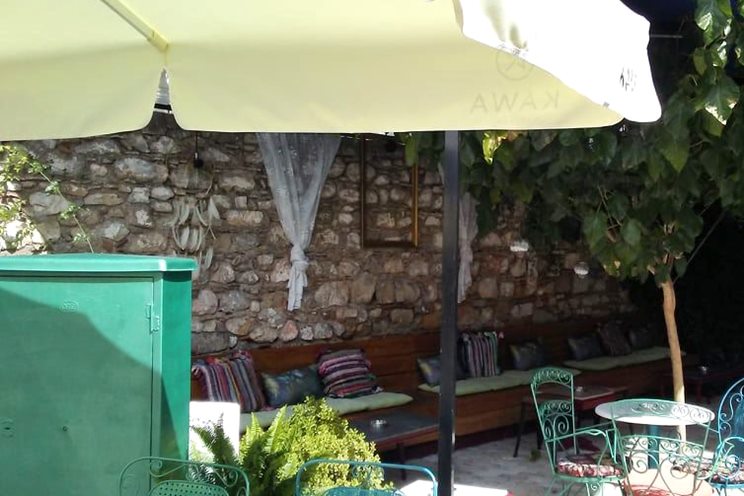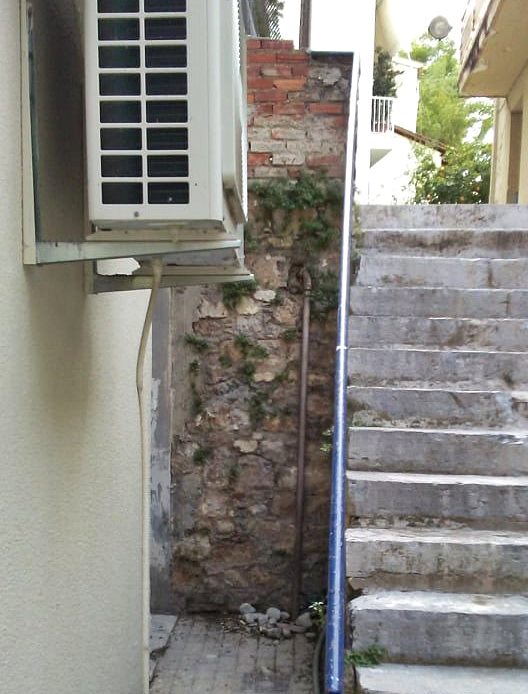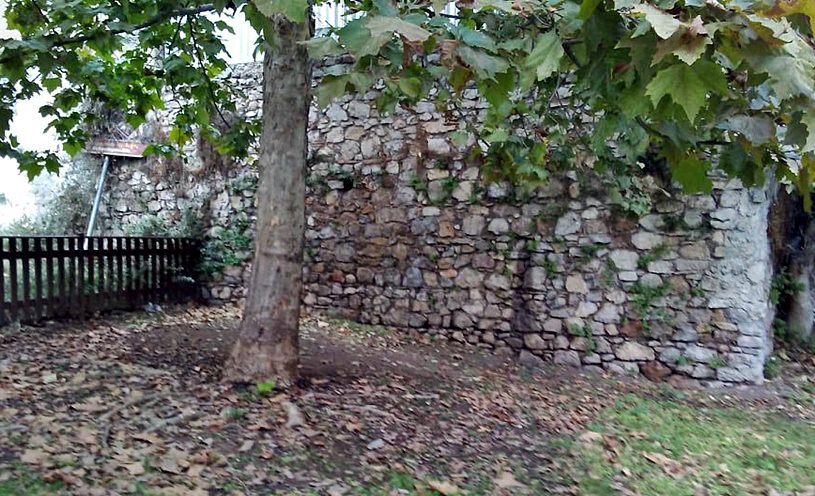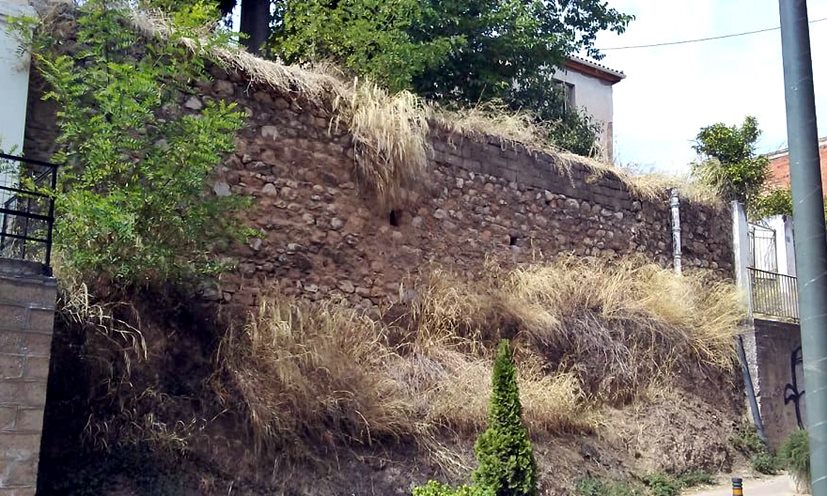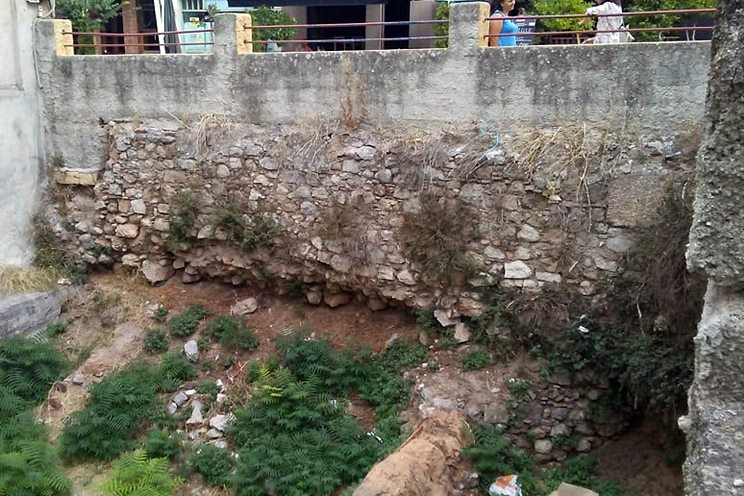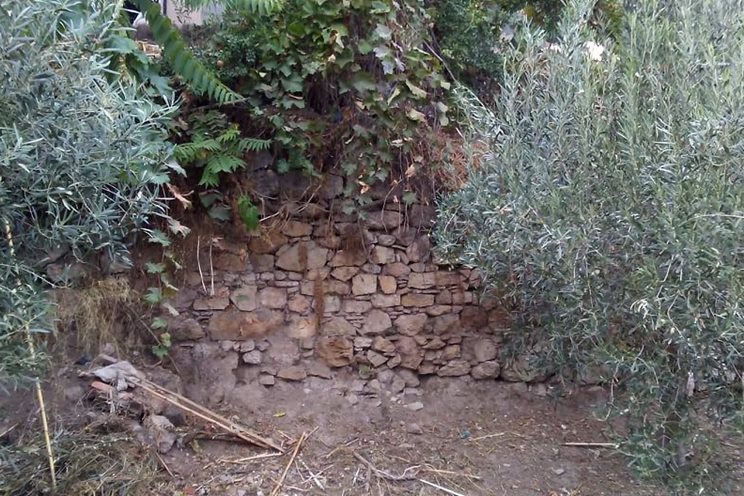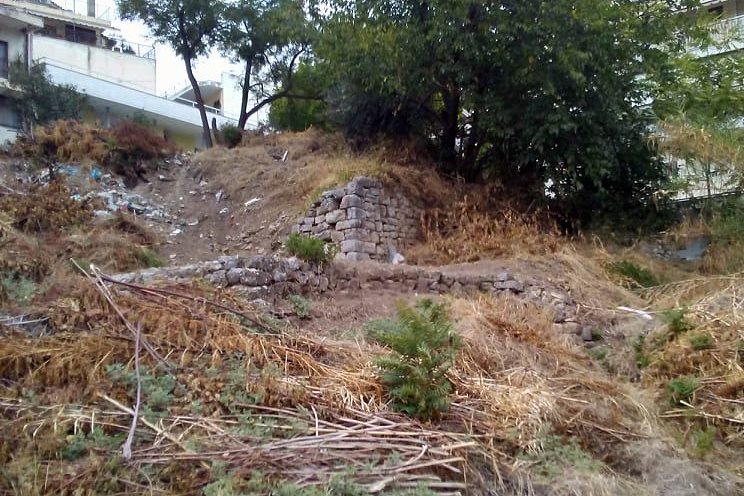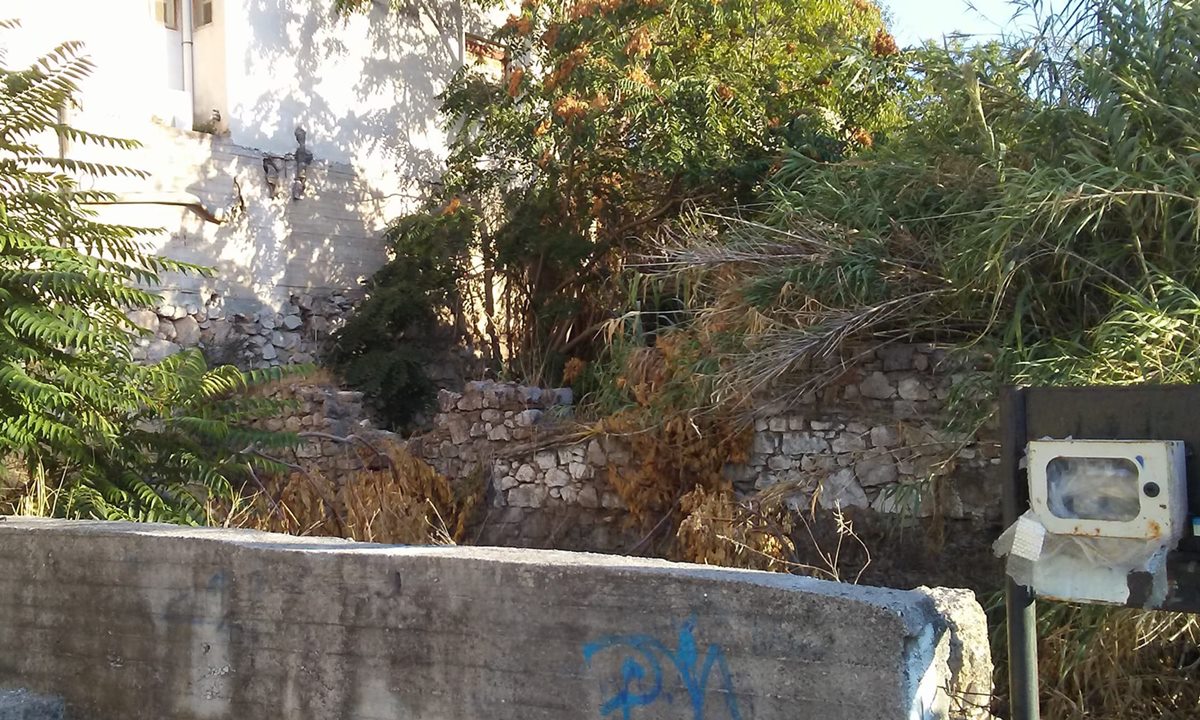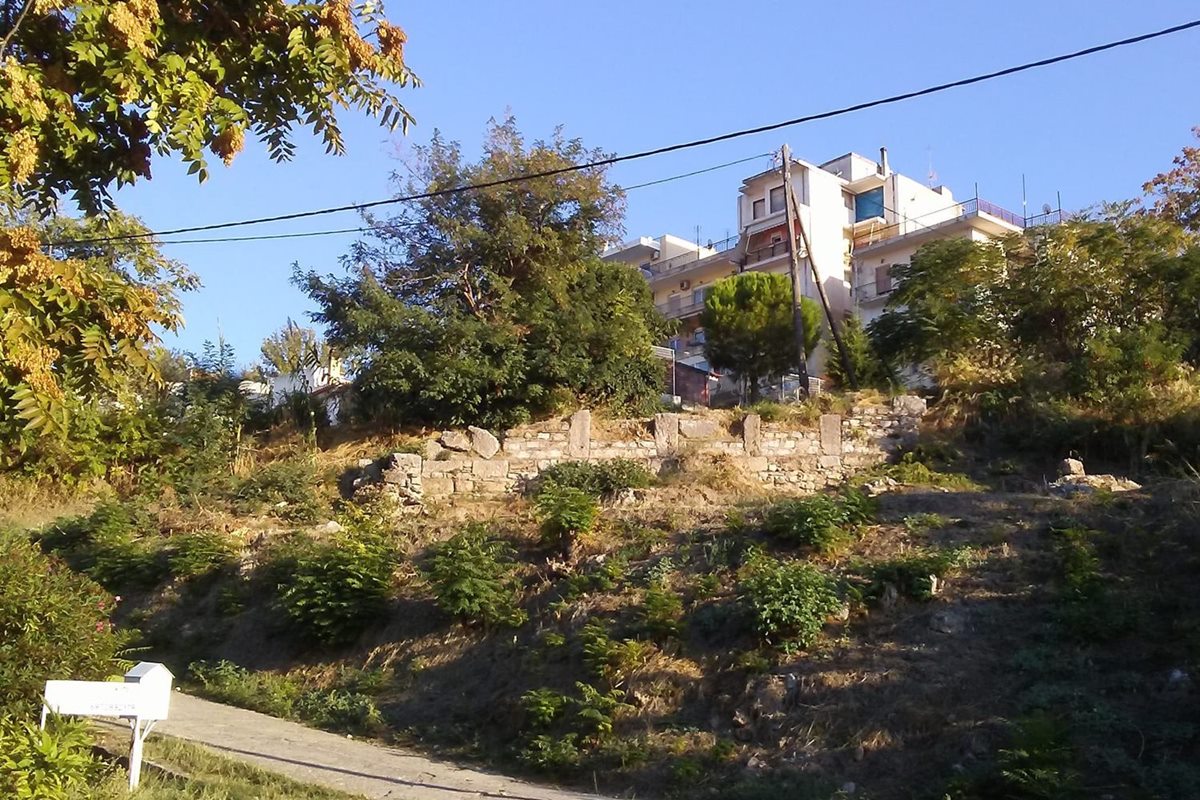Thebes, Thebes, Boeotia,Central Greece
Medieval walls of Thebes
| Location: |
| Thebes, in Boeotia, central Greece |
| Region > Prefecture: | 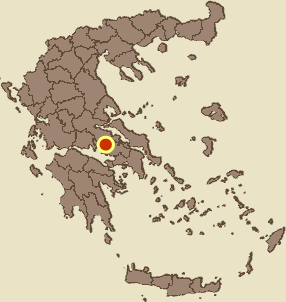 |
| Central Greece Boeotia | |
| Municipality > Town: | |
| City of Thebes • Thebes | |
| Altitude: | |
| Elevation ≈ 200 m |
| Time of Construction | Origin | |
| Various periods | FRANKISH |
|
| Castle Type | Condition | |
| Byzantine City |
Few Remains
|
From the once great Frankish castle of Thebes, what survives today is the imposing tower of Saint Omer on the acropolis (presented on a separate page in kastra.eu) and a few remains of the city walls, including another tower.
On this page we will attempt a small presentation of the medieval walls of Thebes.
History
Thebes was an ancient city with glorious history. It was important even in Greek Mythology with some well known events taking place there, like the story of Oedipus.
In the Byzantine period, Thebes was one of the most important cities of the Greek peninsula with a thriving economy based mainly in textiles and silk commerce. In the 8th century it was the seat of the Thema of Greece (i.e. of the Byzantine province that included Attica, Central Greece and Thessaly) The city was sacked in 1040 by Bulgarian raiders and in 1146 by Normans who destroyed a great part of the Byzantine walls.
In 1204 the Franks occupied those parts of the Byzantine empire and Thebes became part of the Duchy of Athens. As of 1240 the city was ruled by the Saint Omer family. In the 1270s, the baron Nicholas II de Saint-Omer (ruled 1258-1294) repaired the fortifications and built the tower of Saint Omer at the acropolis, which at the time was the most magnificent building in south Greece.
After 1311, when the Catalan Company defeated the Franks in the battle of Almyros, the Duchy of Athens and most of Central Greece passed under Catalan rule. Thebes became the major city of the Catalan dominion.
In 1331, Gautier VI de Brienne, who had inherited the title of Duke of Athens and Baron of Thebes from his father (who was killed in the battle of Almyros), launched a major campaign in Greece (which was called a “Crusade”), with the help of many Western powers, to claim the lands of his ancestors. Gautier was successful in the beginning and arrived in Thebes, which he besieged. The Catalans left the city, having previously destroyed its walls so as not to be used by the Franks. Eventually the “crusade” deflated and ended ingloriously, mainly due to Gautier’s financial inability to pay his army in a long-running campaign.
After that, Thebes remained in the hands of the Catalans, but being defenseless, it began to decline and since then neighboring Livadia has emerged as the most important city of the Catalans. It seems that after the destruction of 1331, the walls of Thebes were never repaired again, at least not to the extent that they could effectively protect it. This degraded the importance of the city.
In 1379, the era of the Catalans in Thebes came to an end, when another mercenary company, the Compañía Navarra, occupied the city and other areas of Central Greece. The Navarrese, who shortly afterwards managed to take control of the Principality of Achaea too, held the city until 1388, when Thebes again came under the jurisdiction of the Duchy of Athens, which was now ruled by the Florentine family of Acciauoli. The Ottoman invasions began very soon (in 1391-1392 with Evrenos Bey) and the Acciauoli were forced to pay a tribute to the Sultan.
At the end of the 14th century, Thebes is still an important city, but the splendor of the 13th century is a distant memory. In the following decades the city deteriorated further as it was defenseless against the raids of the Ottomans. Much of the Boeotian countryside was deserted, while existing settlements were shrinking. The Duchy of Athens was abolished in 1460 and the period of Ottoman rule began, during which Thebes finally ceased to be the splendid city it used to be during the Middle Ages.
Structure, Fortification & Buildings
In Thebes, apart from the tower of Saint Omer, not many elements are visible from the Medieval fortification which, as it was said, was first destroyed by the Normans in 1146 and by the Catalans in 1331.
Although indistinguishable to the unsuspecting observer, some parts of the medieval walls are preserved in the area of the museum (where the ancient acropolis) and in several places on the perimeter of the elevated central part of the modern city.
The most important remnant of the fortification enclosure is the massive tower on the plot “Ktistakis” of Epamineondas Street on the south side of Thebes. It is a square tower with side length 7.5 m. and wall thickness 1.70m. It is considered Frankish and is believed to have protected a gate.
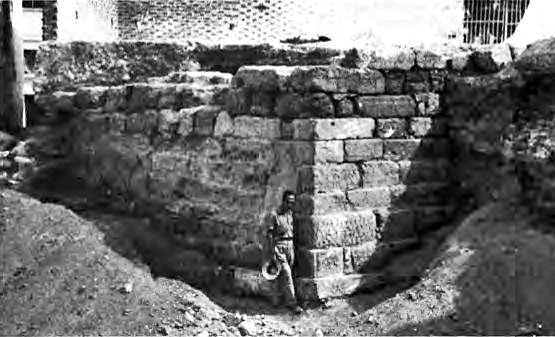
Unfortunately, the tower is not open to the public as it is locked in the basement (!) οf an apartment building. So the only photo we have of ιτ is from the Archaeological Bulletin of 1966, issue 21.
| First entry in Kastrologos: | December 2020 |
Sources
- ΑΡΧΑΙΟΛΟΓΙΚΟΝ ΔΕΛΤΙΟΝ, τεύχος 21-Β1 (1966) , σελ.188, πιν 194
- ΑΡΧΑΙΟΛΟΓΙΚΟΝ ΔΕΛΤΙΟΝ, τεύχος 62-Β1 (2007) , σελ.610
- Research and photos Ioannis Dedes (2020)
|
|
| Access |
|---|
| Entrance: |



